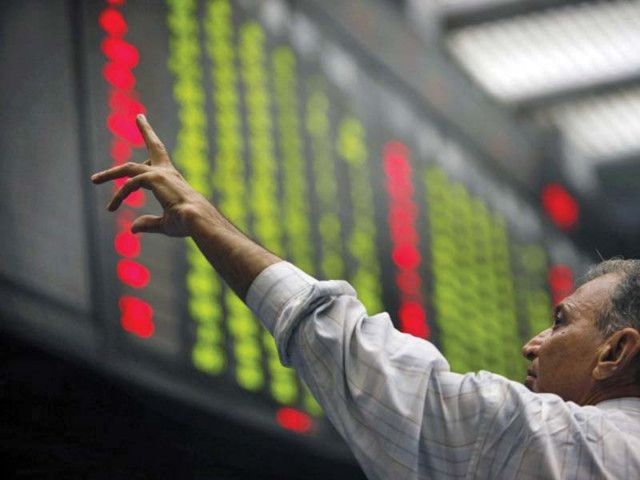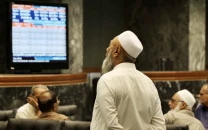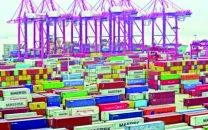Analysis: Karachi Stock Exchange has a great fall
Some analysts attribute the fall to rout that has hit global stocks

Some analysts attribute the fall to rout that has hit global stocks. PHOTO: FILE
Get people to discuss reasons behind the rise and fall of the stock exchange and they will only agree to disagree. No single reason can encapsulate what has happened recently to the Karachi Stock Exchange, let alone the global equity markets, as millions of investors and a variety of reasons have caused the benchmark-100 index to fall by over 6% over the past few weeks.
The key questions investors are asking: has the index bottomed out or is there a decline left? Is this the right time to jump in or is it time to close down trading accounts and make a loss-trimmed exit before the index drops to heart-breaking and heart attack-inducing levels?
Some analysts would attribute the KSE-100 Index’s fall — from its peak of over 36,200 points — to the global rout that has hit US, Chinese and other global stocks, wiping off billions of dollars in the process. They say that investors treat Pakistan as ‘the good boy’ that has paid dividends and hence, profits need to be realised to compensate for the losses incurred in other markets.
Others, who are mostly sceptical of the Pakistan economy, would loosely use the word “correction”, adding that the “overvalued and artificially high” index did not deserve to be that high anyway. The cynics would back that argument up by citing declining exports, a country struggling under a huge pile of debt and persistent power outages that have, in many ways, crippled the economy. Declining commodity prices, governments hit by revenue losses due to falling crude oil prices and slowdown of the Chinese economy are also blamed as reasons for the KSE’s fall.
Others, closely following the city’s developments and monitoring the political landscape, will mention uncertainty over Muttahida Qaumi Movement’s future that also determines the KSE’s rise. After all, reports of its leader, Altaf Hussain, being detained by UK authorities in 2014 led to the index shedding close to 800 points within minutes.
But none of these reasons will fully explain the fall if rumours over regulatory action against ‘bad’ brokers is not mentioned. Market talk suggests that brokers are disgruntled at the regulator urging compliance, especially in the clients’ assets segregation department that requires brokerage houses to keep clients’ and its own money separate and submit statements regularly. Using clients’ idle money and using it to buy stocks at a time when the market is performing well is an old practice, one that does not sit well with the regulator or the investor.
Given that action is likely against some brokers – talks suggest a minute number who are not big players – there was bound to be panic-induced selling. Leveraged investors, attracted by the sweet profits companies have made and the likelihood of a consolidated Pakistan Stock Exchange, had no choice but to follow suit. In attempts to trim losses, they were forced to sell as well. But the support, usually witnessed at the time of a fall, has not been seen yet, which suggests investors are still awaiting clarity on many fronts.
Much of the debate is around the US Federal Reserve’s decision whether or not to raise interest rates, due to be decided on September 17. This would provide clarity to investors worldwide and give direction, in part, to a lot of speculations.
But direction of the KSE will only be determined after brokerage houses and the regulator sort out compliance issues. Market talk suggests the regulator is not going after too many brokers. On their part, the brokers want a free hand. The tussle has led to a steep fall in the KSE-100 Index once this year already, in March, and much of the same is being witnessed right now.
Since the fundamentals have not changed, and the market is at attractive valuations, we are only inclined to believe that this is a short-lived, panic-induced selling/dumping phase that has been masked with the plunge in global stocks.
Published in The Express Tribune, September 8th, 2015.



















COMMENTS
Comments are moderated and generally will be posted if they are on-topic and not abusive.
For more information, please see our Comments FAQ